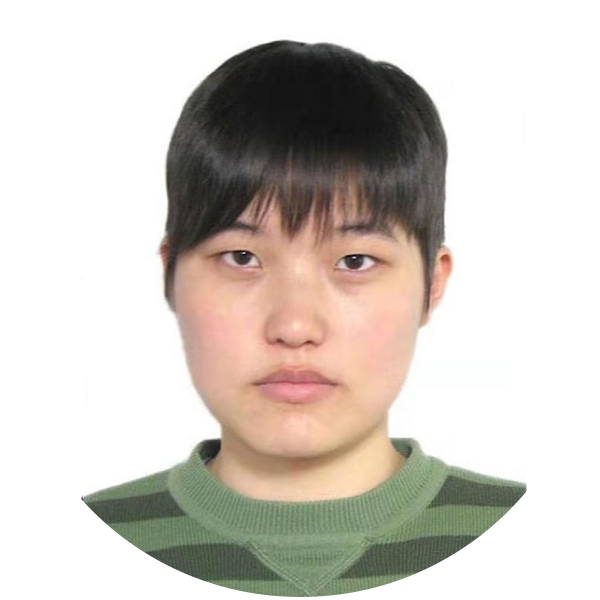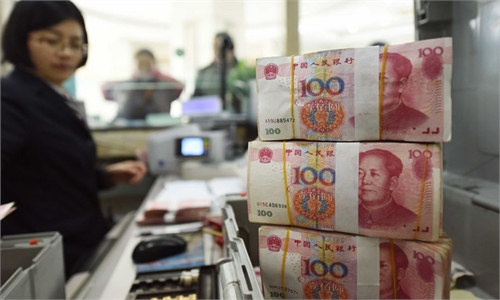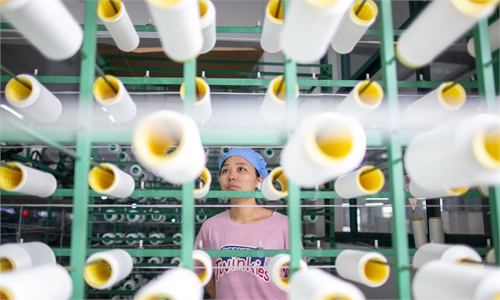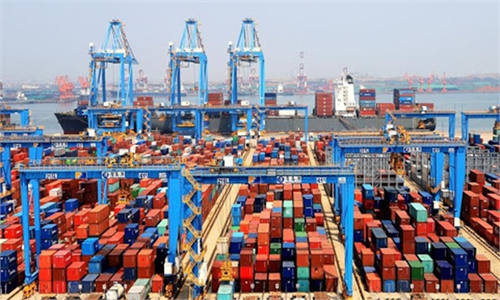China to cut RRR by 50 basis points as top leadership stresses economic stability in key meeting
Top leadership stresses economic stability in tone-setting meeting
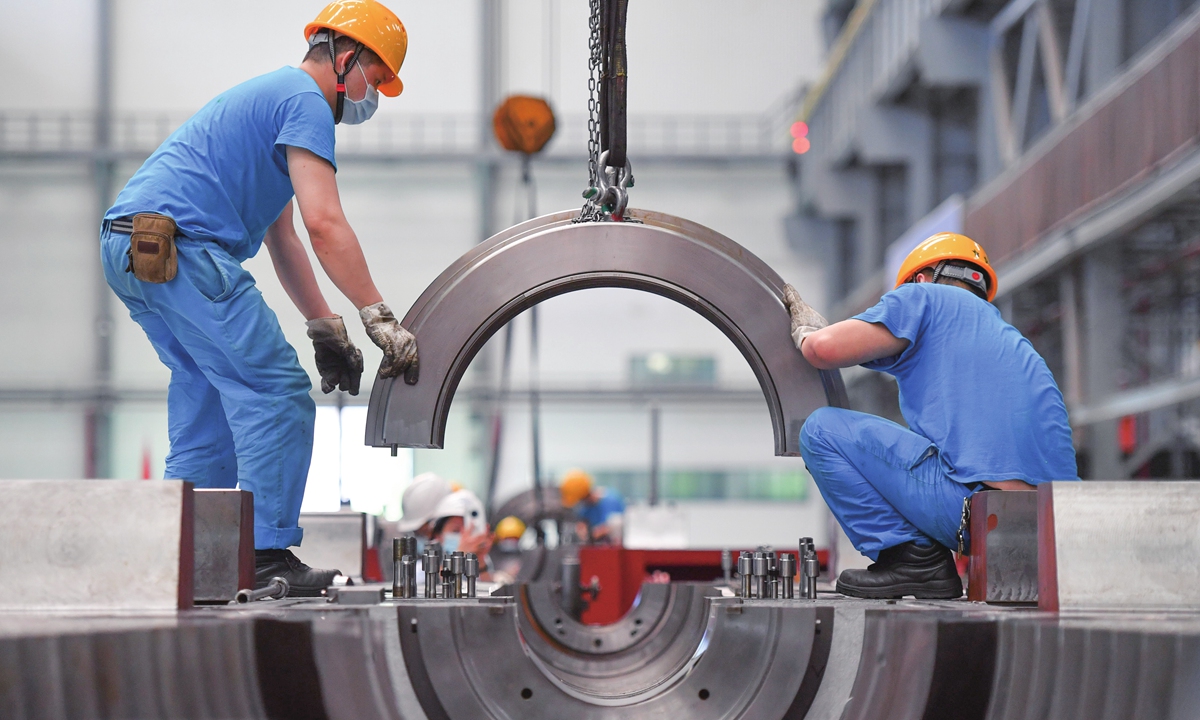
File photo: cnsphoto
China's central bank announced on Monday a 50 basis-point universal cut in the reserve requirement ratio (RRR) for financial institutions, effective from December 15, which would inject 1.2 trillion yuan ($188.3 billion) in long-term liquidity into the economy, as the country's top leadership stressed stability in economic development in 2022 at a tone-setting meeting on Monday.
The Political Bureau of the Communist Party of China (CPC) Central Committee held a meeting on Monday to analyze and study the economic work of 2022, among other topics, according to the Xinhua News Agency.
The CPC leadership meeting stressed that China's economic development maintained a globally leading position in 2021 and economic work for 2022 will prioritize stability, while keeping in place proactive fiscal and prudent monetary policies.
The broad-based RRR cut on Monday, the second this year, comes at a critical moment as the Chinese economy is on a path to hit its annual growth target, and the move would cushion the downward pressure on the economy and reduce financing costs, especially for smaller businesses, economists said.
To support real economic development and foster a moderation in overall financial costs, the People's Bank of China (PBC), the country's central bank, will cut the RRR by half a percentage point starting from December 15, the PBC said on Monday in a statement on its website.
The reduction will bring the weighted average RRR for financial institutions to 8.4 percent, according to the central bank, which pledged to maintain a prudent monetary policy and refrain from a flood of stimulus.
In a separate question-and-answer section on its website, the PBC expounded on its continuation of a prudent monetary policy, saying that the RRR cut, a conventional monetary policy operation, will see a portion of the money used to repay maturing loans through the medium-term lending facility (MLF), while another portion will supposedly replenish long-term capital.
The amount of MLF loans due to mature in December has hit 950 billion yuan, meaning a certain cash gap will be filled with the upcoming RRR reduction, Wu Chaoming, chief economist at Chasing Securities, told the Global Times on Monday.
The Monday decision will release about 1.2 trillion yuan in long-term capital into the economy, according to the central bank, and it is supposed to reduce funding costs by about 15 billion yuan per annum for financial institutions, which will translate into a cut to fundraising costs at large for society.
The RRR cut followed a similar universal cut in July when an RRR cut of 0.5 percentage points applied to financial institutions, which was envisioned to release long-term capital of about 1 trillion yuan.
What makes the latest RRR decision an attention-grabber, though, is its arrival at a time when China is pushing for its economy to continue a post-COVID-19 recovery despite concerns emanating from individual cases as exemplified by the Evergrande issue, market watchers said.
The Monday decision will stabilize market expectations in the wake of the Evergrande debt warning, estimated Wu at Chasing Securities, expecting the RRR cut to strengthen banks' capacity and willingness to lend, and therefore steadying lending growth and easing the downward pressure on the economy.
South China's Guangdong provincial government summoned the heavily indebted China Evergrande Group late on Friday, immediately after the Shenzhen-based property developer warned earlier in the day that it may fail to meet its financial obligations under a $260 million guarantee.
Shortly after the news, three major Chinese financial regulators, including the PBC, the banking and insurance regulator and the securities regulator, in rare simultaneous statements, moved to reassure the markets that the Evergrande issue was an individual case and should not be a concern for the country's capital market and housing market.
"For the property market, which relies heavily on financing, it would have lower fundraising costs after the RRR cut. Besides, liquidity injections will improve corporations' business performance, which would also improve employment to some extent," Xi Junyang, a professor at the Shanghai University of Finance and Economics, told the Global Times on Monday.
The latest move is seen as cementing market belief that the economy is well on course to meet its 2021 full-year growth target of above 6 percent.
An economic blue paper published by the Chinese Academy of Social Sciences on Monday put China's full-year GDP growth at 8 percent for 2021 before slowing to around 5.3 percent in 2022 amid uncertainty over the pandemic.
In another sign of official reassurance, Vice Premier Liu He told the Hamburg Summit of the China-Europe Forum at the end of November that the Chinese economy is expected to exceed its annual growth target.
The Monday announcement, apparently contrary to a bond-buying taper tightrope the US Federal Reserve walks, indicates China's monetary policy independence as the country has more flexibility and leeway in enabling targeted financial support for the economy, analysts said.
Dong Shaopeng, a senior research fellow at the Chongyang Institute for Financial Studies at Renmin University of China, said that China's roll-out of the RRR cut at a time when the US is speeding up its tapering shows that China's monetary policies are "centered on our own needs" instead of "dancing with others."
According to Dong, China did not release liquidity at an earlier stage, which gives the PBC room to do so now.
The US, on the contrary, has released liquidity without restraint for some time, which has pushed it to cut the scale of debt purchases.
Dong also said that China's RRR cut is a reflection of the philosophy of "flexible as well as precise," as China's economic conditions, with third-quarter GDP growth heading down, raise the requirements for boosting investment and providing liquidity for the real economy. Besides, China has not flooded the market or over-stimulated the economy by increasing the monetary base, meaning that monetary policy is still stable, he said.
Dong said that China might cut the RRR again in February 2022 after some "observation" of the economic trend.
